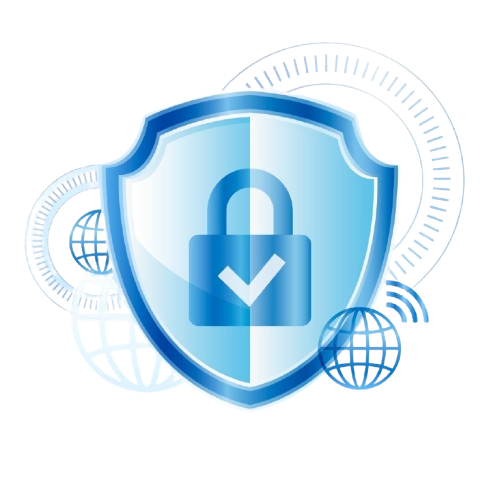Laboratories are the heart of scientific discovery, hands-on learning, and practical education. But while they foster innovation and learning, they also come with risks—chemical burns, electrical hazards, sharp instruments, and biological threats are just a few of the dangers present in most labs.
Whether you’re a high school student conducting your first chemistry experiment, a university researcher working with cultures, or a technician in a clinical lab, lab safety is non-negotiable.
In this post, we break down 7 essential lab safety rules you can’t ignore, and why following them isn’t just protocol—it’s protection for you and everyone around you.
✅ 1. Always Wear Proper Personal Protective Equipment (PPE)
PPE is your first and most important line of defense.
What to wear:
-
Lab coat – to protect skin and clothing from spills
-
Safety goggles – to shield your eyes from chemicals and debris
-
Gloves – appropriate for the materials you’re handling (latex, nitrile, etc.)
-
Closed-toe shoes – to protect feet from spills or dropped equipment
-
Hair ties or caps – long hair should be tied back to avoid fire or chemical exposure
“Dress for success” in the lab means protecting your body, not impressing anyone.
🚫 2. Never Eat, Drink, or Apply Cosmetics in the Lab
It might be tempting to sip coffee during a long lab session or sneak a snack between experiments—but it’s dangerous.
Why this rule matters:
-
Chemical vapors can settle on your food or drink
-
You could accidentally ingest hazardous substances
-
Applying lip balm or makeup with contaminated hands = chemical exposure to your face
Always wash your hands thoroughly before leaving the lab and save your lunch for after your work is done.
⚠️ 3. Know Your Chemicals (and Read the Labels!)
Before handling any substance in the lab, you should know:
-
What it is
-
What it does
-
How dangerous it is
Always read chemical labels and Safety Data Sheets (SDS). These sheets contain information on:
-
Hazards (flammable, corrosive, toxic)
-
Safe handling
-
First aid measures
-
Storage guidelines
-
Disposal procedures
If you’re unsure about a substance, ask your instructor or lab supervisor—never guess!
🔥 4. Handle Equipment and Tools With Care
From Bunsen burners to centrifuges, improper use of lab tools is one of the biggest causes of lab accidents.
Best practices:
-
Inspect equipment before use. Look for cracks, leaks, or frayed cords.
-
Use tongs or heat-resistant gloves for hot glassware.
-
Turn off burners and unplug machines when not in use.
-
Never use equipment you’re unfamiliar with—get trained first.
Remember: Just because a tool looks simple doesn’t mean it’s safe in untrained hands.
🧼 5. Keep Your Workstation Clean and Organized
A cluttered lab bench is an accident waiting to happen.
Tips for good lab hygiene:
-
Only keep necessary materials on your bench
-
Wipe down surfaces before and after work
-
Dispose of waste properly (chemicals, broken glass, biological material)
-
Label all beakers, test tubes, and storage containers clearly
Also, clean spills immediately—and report large or hazardous spills to your supervisor right away.
🆘 6. Know Emergency Procedures
Even with the best precautions, accidents can still happen. Knowing how to respond could make the difference between a close call and a catastrophe.
Know the location of:
-
Emergency exits
-
Fire extinguishers
-
Safety showers and eye wash stations
-
First aid kit
-
Emergency contact numbers
Don’t wait for a real emergency to learn what to do—practice drills and review procedures regularly.
Bonus tip: Memorize the fire triangle (heat, fuel, oxygen) to understand and prevent lab fires.
🧪 7. Never Work Alone in the Lab
It may seem like a good idea to “get ahead” by finishing your experiment alone after hours, but working alone is a major safety risk—and usually against lab policy.
Why?
-
No one can assist you in an emergency
-
You might not notice dangerous symptoms from chemical exposure
-
Many procedures require supervision for compliance and safety
Always make sure a teacher, supervisor, or colleague is present when conducting experiments, especially those involving:
-
Flammable substances
-
Toxic chemicals
-
High-voltage equipment
-
High-temperature apparatus
🔄 Bonus Tips for Long-Term Lab Safety Culture
-
Conduct regular safety training and refreshers
-
Post clear signage for hazardous areas and storage zones
-
Encourage a speak-up culture where anyone can point out unsafe behavior
-
Maintain equipment logs and update SOPs (Standard Operating Procedures)
-
Keep MSDS/SDS binders up to date and accessible to everyone
🧾 Summary: The 7 Unbreakable Lab Safety Rules
| Rule # | Lab Safety Practice |
|---|---|
| 1 | Wear the correct PPE |
| 2 | No eating, drinking, or cosmetics in the lab |
| 3 | Understand and label your chemicals |
| 4 | Handle lab tools and equipment with caution |
| 5 | Keep your workstation clean |
| 6 | Know all emergency procedures and exits |
| 7 | Never work alone |
🎓 Conclusion: Safety is Everyone’s Responsibility
Lab safety isn’t just about following rules—it’s about protecting lives, preventing costly damage, and creating a culture of awareness. Whether you’re a student, educator, or lab manager, following these 7 rules consistently helps ensure that the lab remains a safe space for discovery and learning. In science, mistakes can lead to breakthroughs—but in the lab, the only mistake you can’t afford is ignoring safety.



Leave A Comment